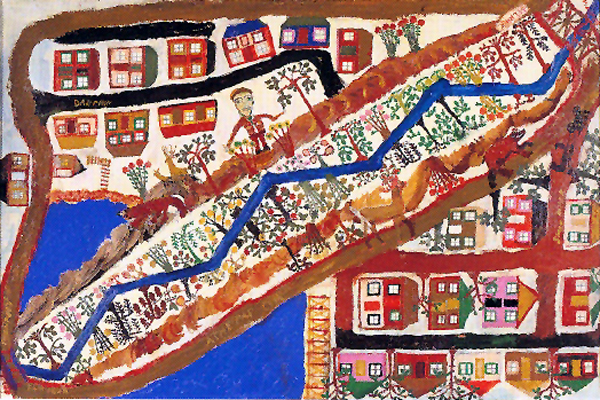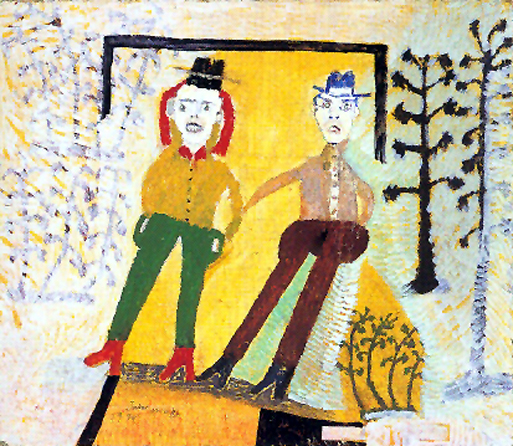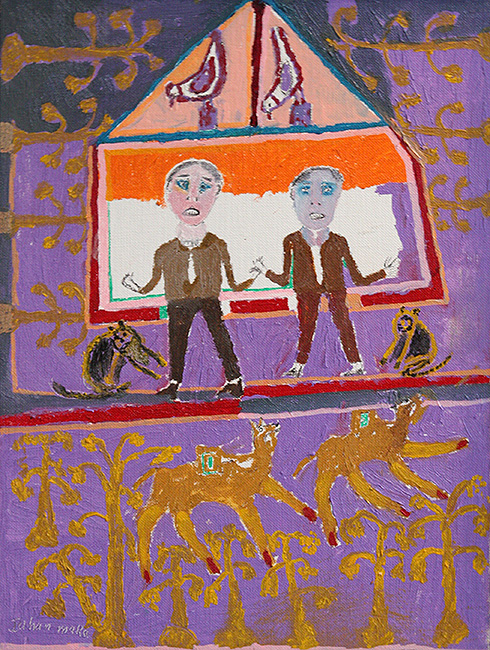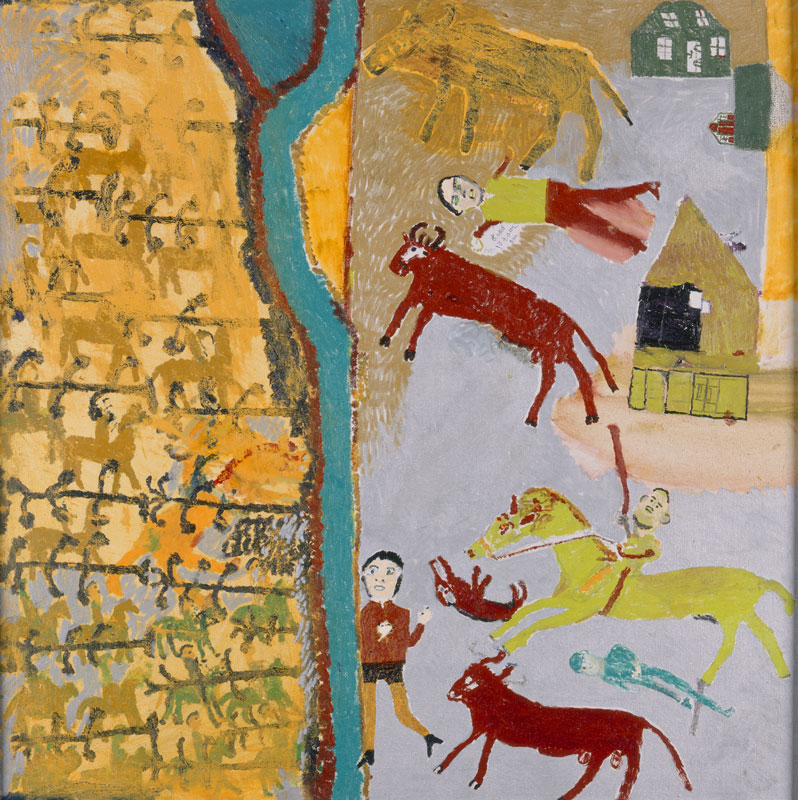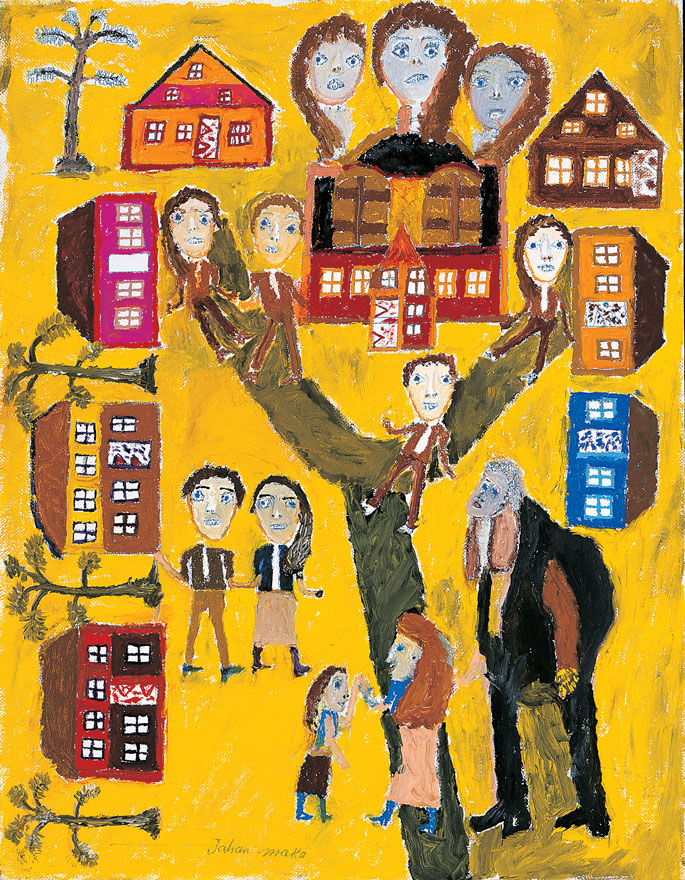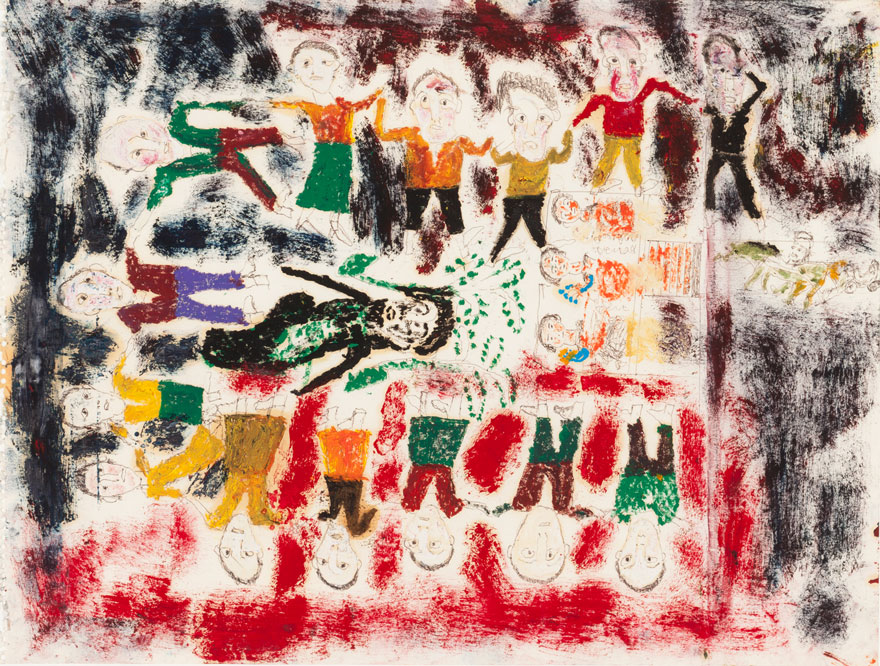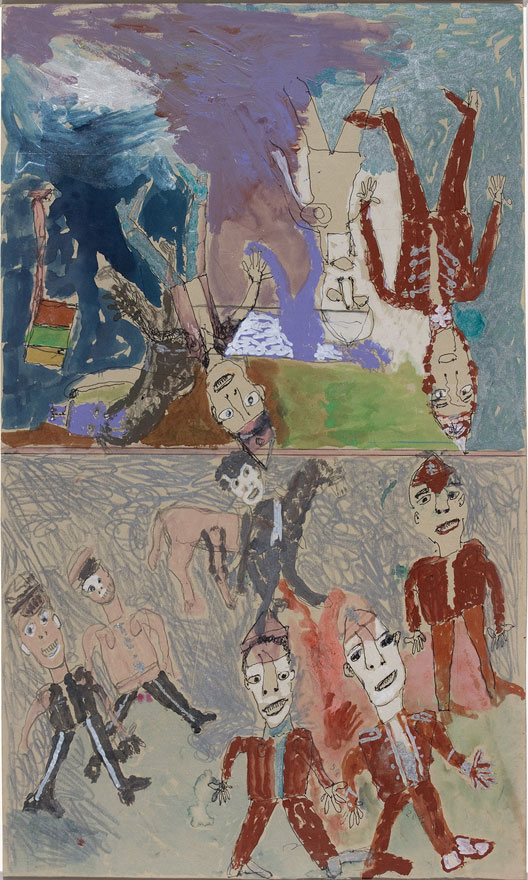Jahan Maka
1900–1987, Canadian (b. Lithuania)
Tags: Painting
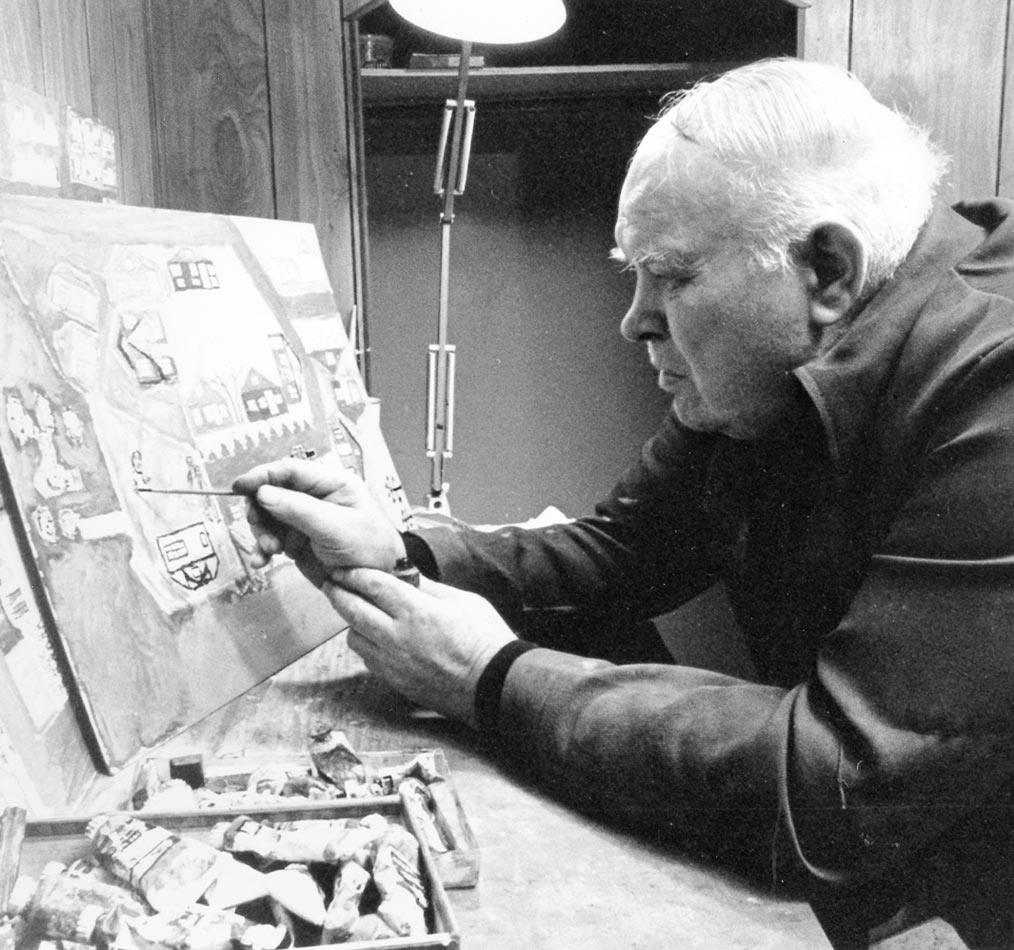
Jahan Maka’s paintings reflect the countryside and tumultuous history of his native Lithuania, the history of Canada, current events, and places that he imagined. His brightly colored shrubbery, architectural structures—which sometimes double as framing devices—and the figures that inhabit this world are frontal and flattened yet viewed from an aerial perspective. (Critic and collector Michael Hall notes affinities between Maka’s subjects and compositional structure—seemingly floating figures surrounded by decorative fields of color and activity—and those of Marc Chagall, who had also experienced peasant life in rural Lithuania.)1
Jahan Maka was born Jonas Tomasiunas-Tomosenskas. His father died when Maka was young, leaving him, as the oldest son, to tend the family’s farm in the small village of Svedasai amid turmoil over the occupation of the Baltic region. The farm was lost, due to either border shifts or land allocation, after World War I. In 1927 Maka immigrated to Canada seeking work, intending to return to Lithuania and buy a farm. He changed his name to John Thomason. He retained his roots by reading newspapers in his native tongue and kept in contact with other Lithuanian immigrants, who, in his last years, often visited him while he worked and—evidence suggests—sometimes contributed marks to sections of his artworks.
Portfolio of Work
Click Arrows to View More Artwork
In Canada, Maka worked as an itinerant laborer in the western provinces until he settled in Flin Flon, Manitoba, where he worked as a hard rock miner until he retired in 1965. His godson, Tony Allison, an art student at the University of Manitoba, encouraged him to paint and brought supplies to supplement Maka’s inventive use of industrial materials. He signed his works with the name Maka because it was a special clan name given to him in his youth. After a decade, his work began to receive recognition. Winning first prize in a juried art exhibition sponsored by the Northern Manitoba Recreational Association in 1977 resulted in two solo exhibitions in Winnipeg the following year. During a road trip with Allison to the southern United States and Mexico in the spring of 1983, Maka purchased the chalk, crayon, paint, and black paper used for his celebrated last series of drawings. Maka continued painting until his death.
